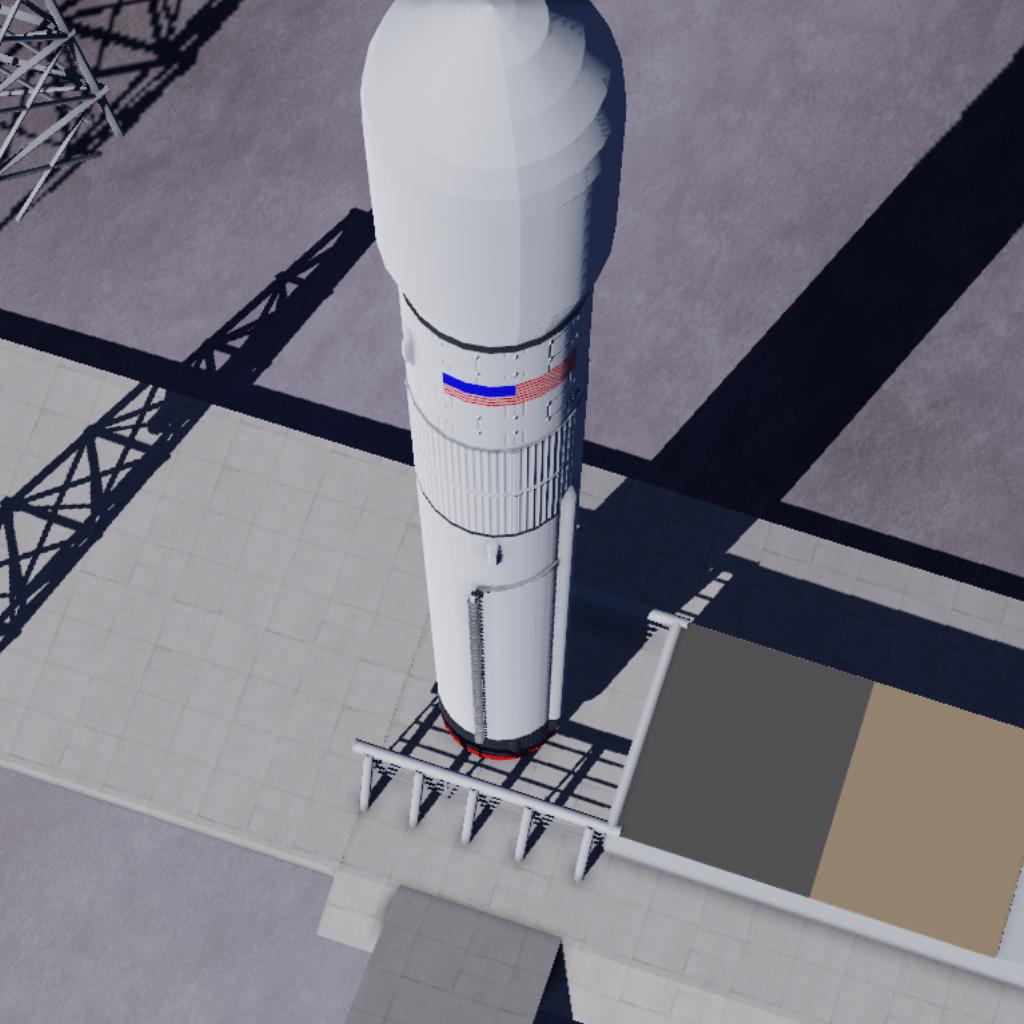finally after more than 100 hours of work, for the past month, ive finally finished this beautiful new addition to our fleet
Stellaris VII is going to be responisble for more than 60 missions this year, including Aurua (our neptune probe),
This rocket was in the design phase for 3 months, before i constructed it, many past rocket's such as the retiring Generation (Gen) class of rocket's inspired this design, which brings the roots of this rocket as far back as september 2022
over the course of the build process, many design flaw's were found, and corrected, leading to the ultimate function and reliability that this rocket has allowed to finally unleash full potential in rocket design for orbispace
in simpler terms, this rocket has aided in the design for possible (hint) future rocket's
this rocket will be used by orbispace well into 2024, with a planned retirment in may of next year, by that time this rocket would have completed a staggering 345 mission's.
so this is truly a momentous occasion to finally reveal the design and launch schedule of this rocket.
in its current configuration, the rocket can launch from either Pad 39A or Pad 39B.
important info: DO NOT ingage the gyroscope until you have lifted off the pad, you can find the gyro in AG 1
To Follow my own rules when building rockets, this project was built in accordance that it meet's mobile freindly level's of parts, with the amount of detail i managed to provide to this project, while still being under 400 parts, its a good usage of detail and i hope it provides mobile user's a thrilling experience of detail to rockets
I intend on always building mobile freindly rocket's, in a special way of adding more detail, but low part count, it's my kept secret at just how i do this, but i promise how i do it does not give you low quality, i take my time on details and build them up from scratch, this takes an incredibly long time.
this upload includes: Stellaris VII and Launch Pad. the first stage is fitted with 2 Agery engines (built and tested at Horizonspace test site)
the second stage is fitted with a Vixen Vac engine (an old classical engine rarely used on newer rockets)
i can promise that every major component of Stellaris VII is and was individually tested at various test sites used by Horizonspace and Orbispace (now merged), this includes the upperstage tank (pressure tested)
and the first stage LOX and CH4 tanks were tested to failure
the Stellaris VII is constructed at the VIF by first rolling in the launch pad by crawler, its then rested on latches, the first stage is hoisted off its transport vehicle, and brought vertical, its then lifted through the VIF, and eventually hoisted into place resting inside its pad.
the upperstage is then transported to the VIF by a transport vehicle, and is hoisted vertical, its then lifted and bolted into place on top of the first stage,
the fairing and payload are then lifted vertically off the transport vehicle and lifted through the VIF, to be bolted into place on top of the Upperstage,
The VIF's door's are then opened and the rocket on the pad is rolled out by crawler to its registered pad, where once all is set, the rocket will launch
At the heart of Stellaris VII's design lies its robust first stage, boasting not one, but two formidable engines. This dual-engine configuration sets the stage for a remarkable thrust-to-weight ratio, ensuring that the rocket overcomes Earth's gravitational pull with exceptional efficiency. The synchronized ignition and controlled burn of these engines result in a seamless and controlled ascent, minimizing the stresses on the rocket's structure while maximizing its acceleration.
Stellaris VII stands as a testament to human ingenuity and the relentless pursuit of progress in space exploration. Its novel rocket design, featuring a dual-engine first stage and a singular engine on the second stage, embodies the spirit of innovation that propels us toward new frontiers. As Stellaris VII embarks on its maiden voyage, it paves the way for a future where the boundaries of space exploration are defined not by limitations, but by the limitless possibilities unlocked by cutting-edge technology and visionary engineering.
, brought to you by: Orbispace (SpacePodCasts on youtube, (if you like what i build in Juno, you might like my channel on youtube)
GENERAL INFO
- Successors 5 craft(s)
- Created On: Windows
- Game Version: 1.1.109.0
- Price: $105,195k
- Number of Parts: 388
- Dimensions: 69 m x 14 m x 14 m
PERFORMANCE
- Total Delta V: 187.8km/s
- Total Thrust: 19.4MN
- Engines: 3
- Wet Mass: 5.11E+5kg
- Dry Mass: 2.15E+5kg
STAGES
| Stage | Engines | Delta V | Thrust | Burn | Mass |
|---|---|---|---|---|---|
| 1 | 2 | 84.6km/s | 14.1MN | 5.8m | 5.11E+5kg |
| 5 | 1 | 103.2km/s | 5.3MN | 8.2m | 2.62E+5kg |
13 Comments
- Log in to leave a comment
-
-
-
-
-
12.4k QuantumSpaceJNO+1 2.3 years ago
@OrbispaceSystems my new gravatar is actually my old one I used in the old era
-
-
-
848 SaturnaAerospace2.3 years ago
@OrbispaceSystems wow. Phenomenal detailing on the first stage! Keep it up, gave a sub on YouTube also.
-
-
-
-








@SaturnaAerospace this is my big project : D